When I was younger, I had a love-hate relationship with butter. On the one hand, I heard it wasn't exactly the healthiest thing I could be eating daily. On the other hand, I loved the tase over the supposed "healthy" alternatives like margarine.
Butter has been in and out of the spotlight for the last few years. In the 1990s, it fell out of favor with the healthy crowd. It seems to be enjoying a resurgence now as the in-vogue lower-carb diets concentrate more on the quality of fats and include butter in the mix.
And I'm all about it. Let's take a look at all of the health effects of butter and make a call.
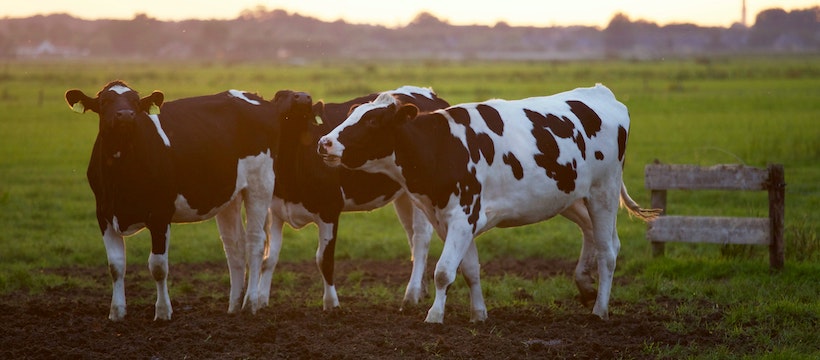
People have been making butter for as long as they've had cows—or even longer.
In ancient Palestine, the same methods for making butter out of a cow, sheep, or goat were in use as recently as the early 20th century. In India, butter has long been a staple for both dietary and ceremonial needs and features prominently in the Rigveda, while the story of Lord Krishna stealing butter as a child is an oft-told tale of the Hindu faith.
The ancient Greeks and Romans considered butter to be more of a "barbarian" food but still noted its delicacy and health benefits. Because of their warmer climates, it was challenging to keep butter cool. Yet, in the colder temperatures of northern Europe, butter became a huge hit—even during the Middle Ages, when trade was relatively slow.
With the rise of industrialization, mass-produced butter became more easily accessible, and today, the world has embraced butter with open arms (and mouths).
Cream is king when it comes to making butter. The cream is the fattiest part of any milk, and will often separate from the rest of the liquid as milk cools. To make butter, the cream is skimmed off the milk and "beaten" or stirred for a reasonable amount of time to form a solid.
Beating the cream breaks up weaker bonds within the cream and forces it to form new bonds with surrounding cream particles. When this happens, small globules will start to take form within the cream. These globules are pure milk fat, otherwise known as butter.
The butter-maker will continue beating the milk until most or all of the cream has been turned into solid butter.
As a general rule, milk from a grass-fed cow will have a slightly higher cream or fat content than milk from a cow fed on grains. It also has a higher concentration of omega-3 fatty acids and other vitamins.
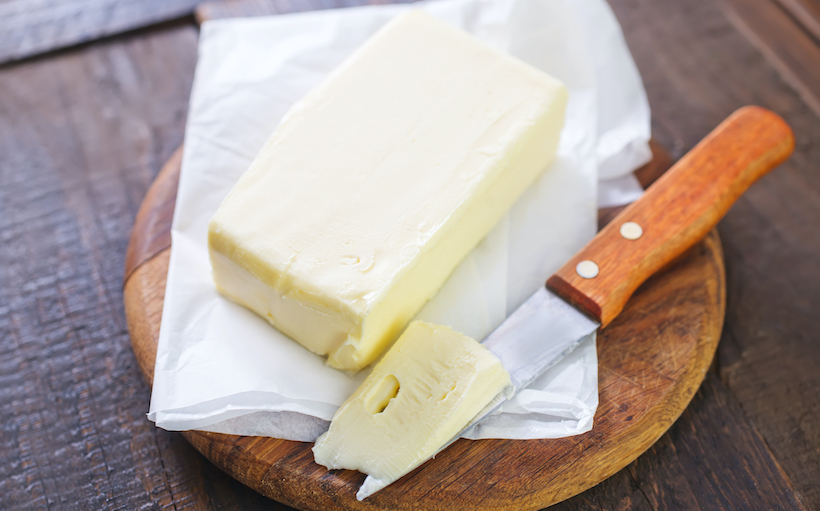
Technically, butter can come from any animal that produces milk. However, the three most common cream-providers that form the base of the (tradeable) dairy world are cows, sheep, and goats. Goat and sheep milk butter actually well-predate the butter made by cow's milk and are still fairly popular today.
The main reason for cow's milk butter's prominence is that the cream in a cow's milk separates easily. Because the separation of cream from milk is such a major part of the butter-making process, that easy separation streamlines several industrial dairy processes.
Compared to cow's milk, goat's milk butter tends to have a slightly musky taste. It is the closest in chemical composition to human milk and is the easiest of the three kinds of milk to digest – even for those with sensitive stomachs.
Sheep's milk has the highest cream content out of sheep, cow, and goat milk. This makes for a smoother, creamier butter – and, like goat's milk, it's also a bit easier to digest than cow's milk.
Still, especially in the United States, the cow is king. When you see a recipe with an unlabeled 'butter,' you should be thinking cow – although you can generally substitute between the three.
Butter is usually used on its own to add flavor to a dish, or as a cooking oil that provides a richness and luxury to a recipe. If you're cooking with butter as an oil, remember that it has a relatively low smoke point—200 to 250 degrees Fahrenheit or 120 to 150 degrees Celsius.
This means that it may not be able to hold up to the pressure of high-temperature cooking. If you need to cook at a higher temperature, ghee, or clarified butter, lacks milk solids and has a much higher smoke point.
Butter is most often packaged in sticks or cubes, with unit measurements printed on the side of the wrapper. It should be kept in a cool place—either in the fridge or in a special butter dish in a cool part of the kitchen—and used within three weeks of opening.
Ghee, on the other hand, can be stored without refrigeration for up to three months. (Although I keep mine in the fridge).
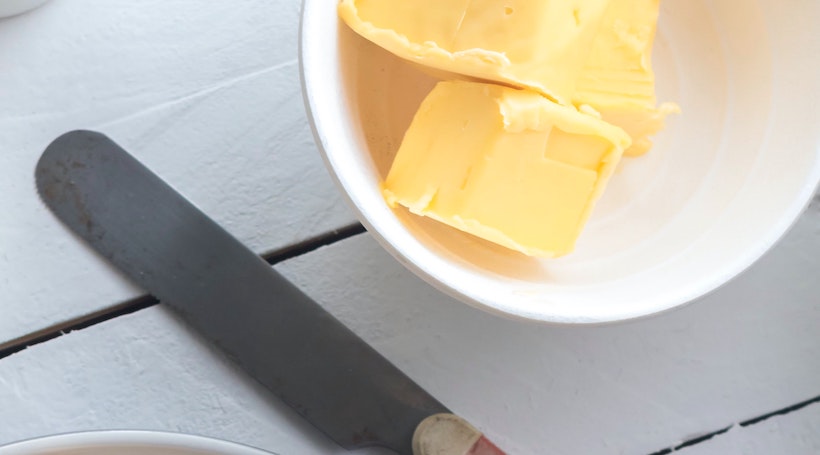
The most common use for butter is culinary, but there are other applications too! Believe it or not, you can use butter around the house for the same reasons that you might use any other oil.
If you've got a squeaky hinge on a door and can't find any WD-40, a little bit of butter can oil the hinges and save you from having to listen to any more annoying squeaks.
In the same way, if you've got a stubborn ring on your finger that isn't coming off with any amount of soap, a small amount of butter can help you remove a tight-fitting piece of jewelry.
Finally, a little bit of butter can be good for the skin! Try applying a small amount of butter to dry or irritated skin and see if it soothes any itchy feelings.
In all of these instances (but especially the last one), moderation is key. Make sure you're only using a little bit of butter, or you may feel overly greasy – at the end of the day, it's still a fat.
Saturated fats are found in most animal products and are made of tightly-packed bonds between particles. The three most common saturated fats found in butter are Palmitic, Stearic, and Myristic fatty acids. If consumed in high enough amounts, these and other saturated fats can increase the markers that indicate an elevated risk of heart disease – such as LDL (low-density lipoprotein) cholesterol.
However, if eaten in small amounts, saturated fats are part of a healthy and balanced diet. While the exact tolerable quantity may vary from person to person, the usual recommendation is to keep your intake to no more than a few tablespoons of butter.
If you're careful with the total amount you consume, the health benefits of butter easily outweigh the health risks typically associated with high amounts of "bad" or saturated fatty acids.
(While I have to note the AHA suggests limiting your saturated fat intake to 5-6% of your diet, I'd bet we'll eventually see that guideline relaxed.)

If saturated fats are "bad," what about other kinds of fats?
Fortunately, butter is full of traditional "good" fats that can lend a lot of health benefits to the final product. In particular, two of the most important fats in butter are butyrate and oleic acid.
Butyrate is derived from butyric acid – funnily enough, which literally means "butter." It is found in butter and a variety of other animal fats. Butyrate has a myriad of good health effects – but primarily, it aids digestion, boosts the immune system, and helps protect the human body from disease. (More on it below).
Oleic acid is a monounsaturated fat that can help lower the amount of cholesterol in the blood and even reduce high blood pressure! Because butter is rich in both compounds, small amounts of butter have beneficial effects on the heart.
The last kinds of fats found in butter are trans fats. Trans fats are a type of unsaturated fat that can have either saturated (double) bonds or unsaturated (single) bonds. High levels of trans fats in your diet are (unfortunately) a known factor for heart and circulatory disease.
One type of trans fat found in butter, however, carries significant health benefits. Conjugated linoleic acid, or CLA, is found in butter and several other dairy products and may be able to reduce the risk of cancer. While human studies are still ongoing, CLA has been proven to inhibit chemical-based cancer in animal testing.
Funnily enough, CLA is also often cited as a bodybuilding aid. In small doses, butter can help protect against a wide variety of illnesses.
Despite its somewhat spotted reputation, butter is loaded with vitamins and minerals that can help boost your health. The most prominent vitamin found in butter is Vitamin A, which is vital for eye health and helps develop and protect vital organs and systems within the body.
Butter is also high in Vitamin E. As a powerful antioxidant, Vitamin E helps protect your body against breakdown to reactive oxygen species (ROS) induced by the environment and toxins your body is exposed to throughout the day.
Vitamin B12 helps boost your metabolism and treat internal fatigue. This means that the production and function that your body goes through daily can be improved, protected, and just overall improved by small, regular amounts of butter!

Lactose is basically just a sugar found in milk. To digest it properly, the body has to produce enough lactase to break it down to its constituent sugars – glucose and galactose. People who suffer from lactose intolerance do not naturally produce enough lactase and may not enjoy a lot of dairy products as a result.
Fortunately, butter is extremely low in lactose. Because it's made only from the cream of the milk and doesn't incorporate a lot of the proteins and carbs found in the milk, butter has only trace amounts of lactose.
If you're lactose intolerant, you may be able to enjoy moderate amounts of butter without any real issues – although, to warn you, the "safe" amount varies between individuals.
Margarine is a butter replacement made from vegetable oil instead of animal milk. As a result, margarine lacks the distinctive creamy taste that makes butter so popular, even though both have similar fat content. Margarines are closer to 'designer' fat – manufacturers can create more consumer-friendly features, such as easy spreadability out of your fridge.
The major health benefits found in margarine purportedly derive from its lack of animal fats. Margarine may be slightly lower in some kinds of fats (such as saturated), and margarine also been found to reduce the amount of cholesterol in the bloodstream.
However, the taste is remarkably different, and margarine has its own associated health risks that make it less appealing than butter. Though scientists cheered margarine over butter in the latter half of the 20th century, they're now catching up to its deficiencies.
While margarine may be lower in animal fats, depending on its creation process, it may have a high number of unnatural trans fats. As a result, the trans fats that were supposedly so dangerous in butter were until recently present in larger quantities in nearly every brand of margarine (and many other cooking oils).
In the United States in 2015, the FDA under President Barack Obama effectively banned the use of trans fats from partially hydrogenated oils. (Don't worry, oils like palm oil are better-suited alternatives, albeit with a shorter shelf life.)
Both butter and margarine have high-fat content, but the origins and composure of those fats are just as important as the fact that they're present. While most of the fats found in butter are naturally-occurring and relatively healthy in moderate doses, the fats found in high doses in margarine are artificial. They seem to contribute to heart disease and other cardiovascular or circulatory conditions.
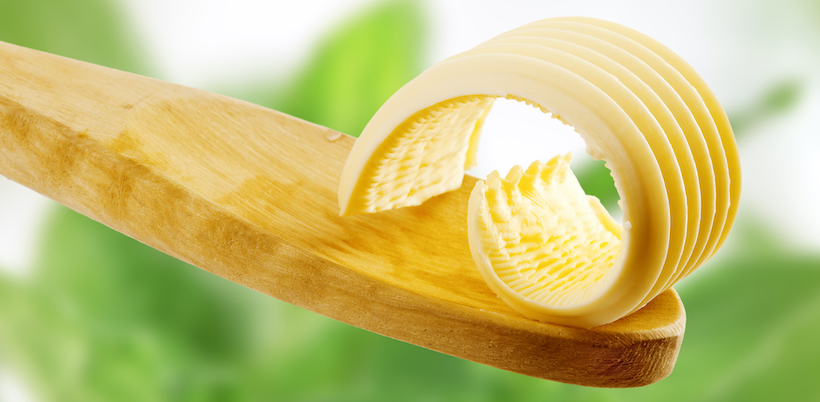
According to some recent studies, moderate amounts of butter may help reduce the risk of diabetes in pre-diabetic patients.
Because of butter's ability to promote healthy body functioning and protect against breakdown, early results seem to indicate that it may be able to help fight off one of the most common diseases in the western world.
While the association between butter consumption and reduced risk of multiple diseases may not be extremely strong, the link still exists, which gives researchers hope that a further connection may be found following more intensive study and experimentation.
Metabolic syndrome is a group of conditions that often occur together and increase your risk for serious health conditions such as diabetes, stroke, and heart disease. Often, metabolic syndrome is linked to a diet high in trans and saturated fats as well as a sedentary lifestyle.
Studies show that the dairy proteins and fats found in butter can reduce the risk of developing metabolic syndrome. One proposed mechanism: by increasing the "good" fats you consume, you cut back on the number of unhealthy fats that can cause serious problems.
A lot of us have grown up taking a glass of milk before or after meals. As it turns out, there's a good reason for that practice! Studies indicate that butyrate, plentiful in butter, can help boost the health of your digestive tract.
This same compound has strong anti-inflammatory properties, which means that it can help protect against an upset stomach by soothing the inflammation process.
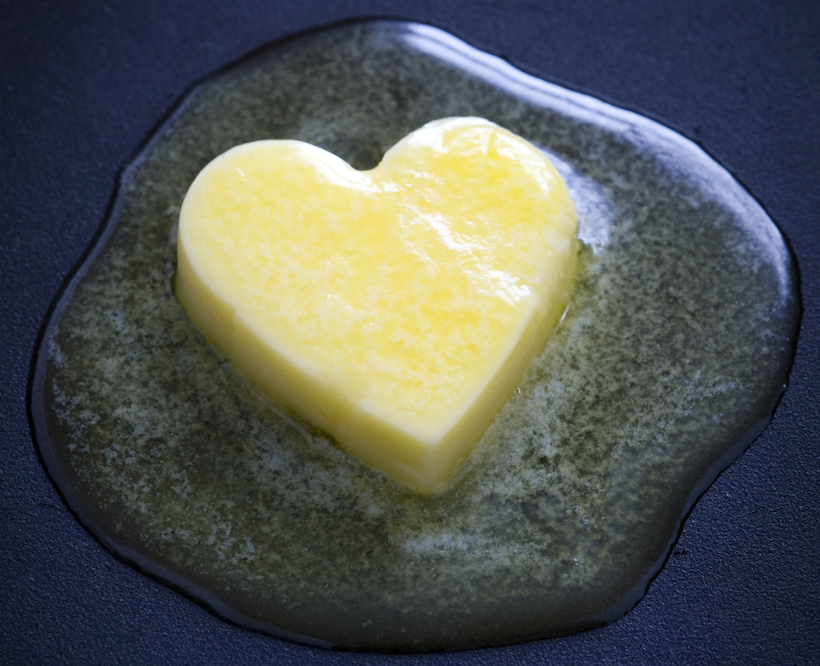
Cardiovascular disease is one of the most dangerous health threats in the modern world, so it's hardly surprising that people should be searching for a cure or a means of prevention.
What is surprising, however, is an increase in studies that suggest that regular consumption of cow's milk and dairy products like butter can help reduce the risk of heart attacks.
Essentially, the "healthy fats" in butter can help boost heart strength, which in turn protects the heart and the entire cardiovascular system from potential diseases that may increase the risk of a heart attack or other common conditions.
It's no secret that the modern diet is pretty high in sugar. As the risk of Type-2 Diabetes increases worldwide, many researchers are looking for ways to increase glucose tolerance and maintain a healthy blood sugar level within the body.
The dairy fats found in butter can help increase glucose tolerance and insulin sensitivity. As mentioned above, this means that butter can help reduce the risk of developing Type-2 diabetes when taken as part of a balanced diet.
However, this also means that moderate consumption of butter can help restore your body to a normal, healthy blood sugar level.
One of the most common compounds found in butter, CLA, is widely renowned for its various health benefits. Of these benefits, one of the newer and more exciting applications is its potential ability to combat certain types of cancer.
While CLA has been shown to prevent or reduce the risk of chemically-induced cancers in animal trials, it should be noted that not a lot of research has yet been done in human cancers.
However, if further testing reveals that CLA does have cancer-fighting properties, then butter would become one of the most powerful (and palatable) means of fighting back.
As mentioned earlier, some of the compounds present in butter have strong anti-inflammatory properties. While this means that a little bit of butter can help soothe your digestion, it also has the potential for a more powerful long-term impact.
Vitamin K2 is found in high concentrations in most butter. Studies have shown that this vitamin can help reduce inflammation—specifically, the type of inflammation typically associated with arthritis.
While moderate amounts of butter probably won't be able to cure arthritis completely, they may reduce some of the swelling and discomfort that usually goes hand in hand with that condition.
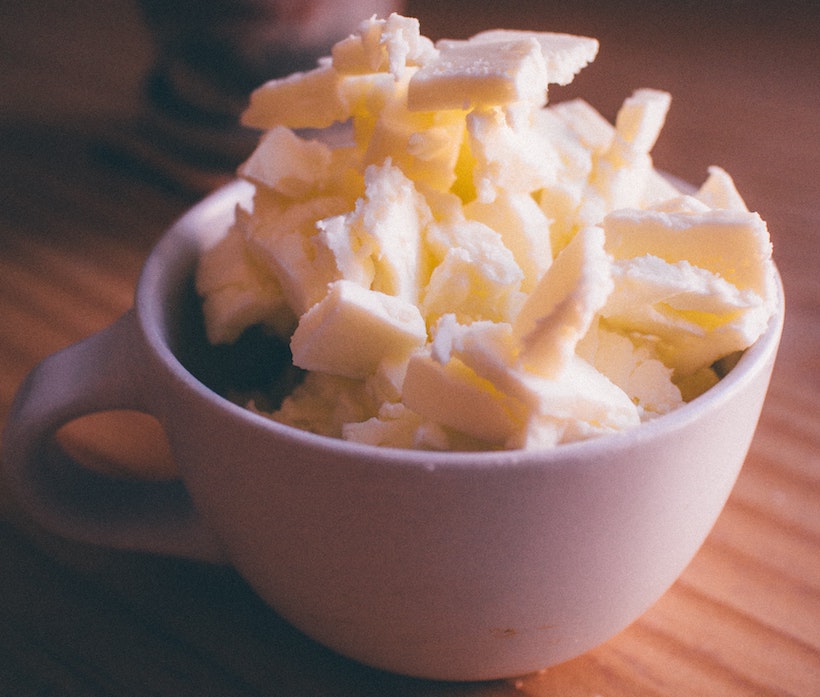
While the health benefits of butter may seem overwhelming, we must acknowledge that most of these benefits are only found when we consume butter in moderation.
Eating butter at every meal or eating large amounts of butter can lead to rapid weight gain. The trans fats found in butter may be lower than those found in other oils, but at quantity, they can still elevate our cholesterol and increase our risk for heart disease.
As a result, if you want to enjoy the health benefits of butter, make sure you're eating only the recommended amount as part of a balanced diet.
So all things considered, is butter good for you? The short answer is yes—again, in moderation.
The healthy, recommended amount of butter can be a great boost to your body's health. The good fats found in butter make it a healthier choice than margarine, which is often packed with hydrogenated oils.
If you want to enjoy the rich taste of butter, but don't want to deal with the lactose associated with the milk solids, try ghee or clarified butter. You'll get the same taste without the more difficult compounds. You'll also get a higher smoke point to boot, with easier storage.
No matter your preference, a little bit of butter as part of your daily routine isn't nearly as dangerous as we've always been told. Just a little bit can go a long way towards a healthier, longer life.

Was butter ever really gone? Maybe not – but people who enjoyed the creamy goodness despite the misguided warnings against its dangers weren't considered "health experts." It turns out they knew more than our health systems gave them credit for – butter is much better for you than you grew up believing.
So, if you've been eating butter all along, rest a little bit easier. Butter's health effects are undeniably tilted towards the positive side.
(If only it were easier to spread out of the fridge!)